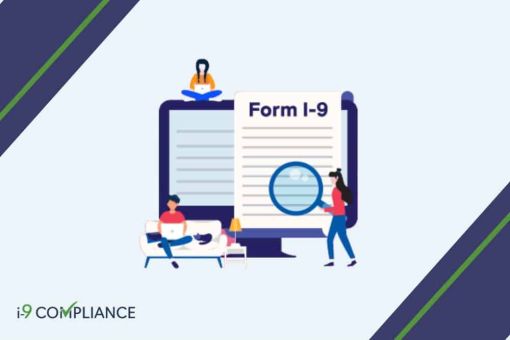How Can My Company Complete Form I-9s for Remote Workers?

Employers must verify the identity and employment authorization of every employee hired after November 6, 1986. To do this, employers must complete and retain Form I-9, Employment Eligibility Verification, for each employee they hire to work in the United States. Following the U.S. Citizenship and Immigration Services guidance is recommended when completing Form I-9 because the verification form is often difficult to fill out.
Employees must complete Section 1 of Form I-9 no later than their first work day, but not before accepting the job offer. Once Section 1 is signed and returned, the employer must review it. If there are errors, the employee must make corrections and resubmit. The employer then completes Section 2 of Form I-9. Finally, the employer must physically inspect the employee’s presented documents. Employers utilizing E-verify must keep photocopies of the completed papers. Otherwise, there is no need. If the employer chooses to keep copies of the documents, they must keep copies for all employees. Employees can choose which documents to present as long as they choose one document from List A or one from List B and C of the acceptable documents.
Remote Employees
The remote option is available only for employers with no employees physically present at the worksite. The standard policy for physically inspecting the identification documents presented for Form I-9 applies if employees are at the specific work site, and the remote status of other work sites is considered separately.
Inspecting the employee’s documents is a crucial step for the employer when completing Form I-9. This step confirms the employee’s identity and authorization for employment in the United States. During the COVID-19 pandemic, Immigration and Customs Enforcement (ICE) allowed some relaxation of this requirement. The relaxed policy was extended several times but ends on October 31, 2022.
The relaxed policy defers the physical inspection for 60 days or until three days after the current national emergency declaration ends, whichever happens first.
The employer must obtain and remotely inspect the identification documents the employee presents no later than three days after the employee’s first day of work. In addition, the employer needs to retain copies of the documents and complete Section 2 of Form I-9.
When normal operations resume at the employer’s workplace, the employee must report within three business days and present their identification documents for the employer to inspect. The employer must then annotate the additional information box of Section 2, giving the reason for the delay, acknowledge that the identification documents have been physically inspected, and provide the inspection date.
Employers who use this remote option must have an onboarding and telework policy for each employee.
Unfair Documentary Practices
Businesses must take care not to discriminate against any employees during the employment eligibility verification process. To ensure the employers do not discriminate against the onboarding employees, the latter decide which documents to present when completing or reverifying Form I-9. Therefore, employers cannot request specific records from the employee and must not order the employee to submit different documents. Additionally, employers should be careful not to reject documents that appear genuine and relate to the person. The Immigration Nationality Act prohibits discriminatory documentary practices, and failing to adhere to the act can result in penalties or fines for the employer.
Completing Form I-9 is a complicated process, so ensure proper completion using an electronic I-9 management tool. This tool guides employers through the employment verification process and informs hiring personnel which documents are suitable for proving work authorization.
Learn more about automating your employment eligibility verification and ensuring compliance with I-9 Compliance.